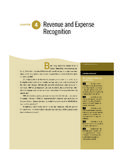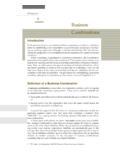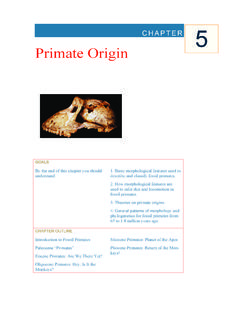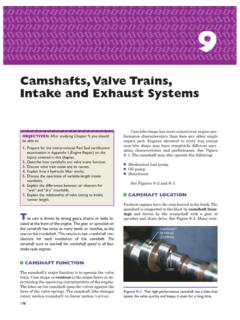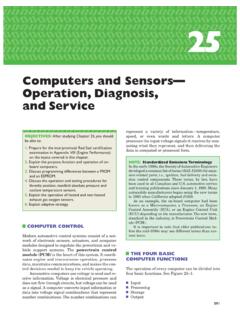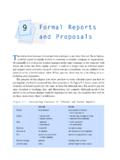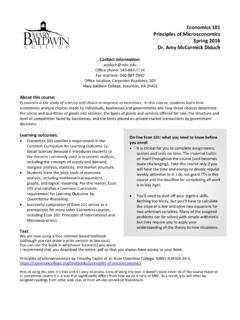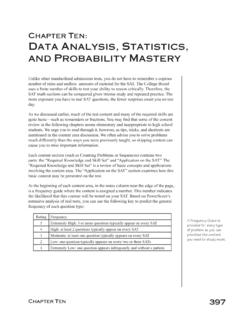Transcription of Cost Allocation and Activity-Based Costing Systems
1 5 Cost Allocation andActivity- based CostingSystemsCost Allocation andActivity- based CostingSystemsLEARNING OBJECTIVESA fter studying this chapter , you will be able the major purposes for allocating the relationship between activities, resources, costs, and cost recommended guidelines to charge the variable and fixed costs of servicedepartments to other organizational Identify methods for allocating the central costs of an the direct, step-down, and reciprocal Allocation methods to allocate servicedepartment costs to user Describe the general approach to allocating costs to products or Use the physical units and relative-sales-value methods to allocate joint costs to Activity-Based Costing to allocate costs to products or the steps involved in the design and implementation of Activity-Based Costing Activity-Based costs for cost why Activity-Based Costing Systems are being how just-in-time Systems can reduce non-value-added activitiesChapter 5 Cost Allocation and Activity-Based Costing Systems179A university s computer is used for teaching and for government-fundedresearch.
2 How much of its cost should be assigned to each task? A city creates aspecial police unit to investigate a series of related assaults. What is the total costof the effort? A company uses a machine to make two different products. Howmuch of the cost of the machine belongs to each product? These are all problemsof cost Allocation , the subject of this chapter . University presidents, city man-agers, corporate executives, and others all face problems of cost is the first of three chapters on cost accounting Systems the tech-niques used to determine the cost of a product or service. A cost accounting sys-tem collects and classifies costs and assigns them to cost objects. The goal of a costaccounting system is to measure the cost of designing, developing, producing (orpurchasing), selling, distributing, and servicing particular products or Allocation is at the heart of most cost accounting first part of this chapter describes general approaches to cost we present some factors to consider in selecting cost- Allocation methods,there are no easy answers .
3 Recent attempts to improve cost- Allocation methodshave focused on Activity-Based Costing , the subject of the last part of this Allocation IN GENERALAs chapter 4 pointed out, cost Allocation is fundamentally a problem of linking(1) some cost or groups of costs with (2) one or more cost objectives, such as prod-ucts, departments, and divisions. Ideally, costs should be assigned to the costobjective that causedit. In short, cost Allocation tries to identify (1) with (2) viasome function representing costs with cost objectives is accomplished by selecting cost used for allocating costs, a cost driver is often called a cost-allocationbase. Major costs, such as newsprint for a newspaper and direct professionallabour for a law firm, may each be allocated to departments, jobs, and projects onan item-by-item basis, using obvious cost drivers such as tonnes of newsprint con-sumed or direct-labour-hours used.
4 Other costs, taken one at a time, are notimportant enough to justify being allocated individually. These costs are pooledandthen allocated together. A cost poolis a group of individual costs that is allocatedto cost objectivesusing a single cost driver. For example, building rent, utilities cost,and janitorial services may be in the same cost pool because all are allocated onthe basis of square metres of space occupied. Or a university could pool all theoperating costs of its registrar s office and allocate them to its colleges on the basisof the number of students in each faculty. In summary, all costs in a given costpool should be caused by the same factor. That factor is the cost different terms are used by companies to describe cost Allocation inpractice. You may encounter terms such as allocate, attribute, reallocate, trace, assign,distribute, redistribute, load, burden, apportion, and reapportion, which can be usedinterchangeably to describe the Allocation of costs to cost Purposes of AllocationManagers within an organizational unit should be aware of all the consequences oftheir decisions, even consequences outside of their unit.
5 Examples are the additionof a new course in a university that causes additional work in the registrar s office,Cost Accounting techniques used todetermine the cost of aproduct or service by col-lecting and classifyingcosts and assigning themto cost driver when it isused for allocating group of indi-vidual costs that is allo-cated to cost objectivesusing a single cost addition of a new flight or an additional passenger on an airline that requiresreservation and booking services, and the addition of a new specialty in a med-ical clinic that produces more work for the medical records each of these situations, it is important to assignto the organizational unitthe directincremental costs of the decision. Using the distinction noted in Chapter4, managers assign direct costs without using allocated costs.
6 The Allocation ofcosts is necessary when the linkage between the costs and the cost objective isindirect. In this case, a basis for the Allocation , such as direct-labour-hours ortonnes of raw material, is used even though its selection is cost Allocation base has been described as incorrigible, since it is impossible toobjectively determine which base perfectly describes the link between the cost andthe cost objective. Given this subjectivity in the selection of a cost- Allocation base, ithas always been difficult for managers to determine When should costs be allo-cated? and On what basis should costs be allocated? The answers to these ques-tions depend on the principal purpose or purposes of the cost are allocated for three main obtain desired motivation.
7 Cost allocations are sometimes made toinfluence management behaviour and thus promote goal congruenceand managerial effort. Consequently, in some organizations there is nocost Allocation for legal or internal auditing services or internal man-agement consulting services because top management wants toencourage their use. In other organizations there is a cost Allocation forsuch items to spur managers to make sure the benefits of the specifiedservices exceed the compute income and asset valuations. Costs are allocated to products andprojects to measure inventory costs and cost of goods sold. These allo-cations frequently service financial accounting purposes. However, theresulting costs are also often used by managers in planning, perfor-mance evaluation, and to motivate managers, as described justify costs or obtain reimbursement.
8 Sometimes prices are baseddirectly on costs, or it may be necessary to justify an accepted bid. Forexample, government contracts often specify a price that includesreimbursement for costs plus some profit margin. In these instances,cost allocations become substitutes for the usual working of the mar-ketplace in setting first purpose specifies planning and control uses for Allocation . The sec-ond and third show how cost allocations may differ for inventory Costing (andcost of goods sold) and for setting prices. Moreover, different allocations of coststo products may be made for various purposes. Thus, full costs may guide pric-ing decisions, manufacturing costs may be appropriate for asset valuations, andsome in-between costs may be negotiated for a government , all three purposes would be served simultaneously by a single cost allo-cation.
9 But thousands of managers and accountants will testify that for most costs,this ideal is rarely achieved. Instead, cost allocations are often a source of discontentand confusion for the affected parties. Allocating fixed costs usually causes the great-est problems. When all three purposes cannot be attained simultaneously, the man-ager and the accountant should start attacking a cost Allocation problem by trying toidentify which of the purposes should dominate in the particular situation at inventory- Costing purposes dominate by default because they are exter-nally imposed. When allocated costs are used in decision making and performance180 PART ONE MANAGEMENT ACCOUNTING, INFORMATION AND DECISONSOBJECTIVE 1 Explain the majorpurposes forallocating , managers should consider adjusting the allocations used to satisfyinventory- Costing purposes.
10 Often the added benefit of using separate allocationsfor planning and control and inventory- Costing purposes is much greater thanthe added Types of AllocationsAs Exhibit 5-1 shows, there are three basic types of cost of joint costs to the appropriate responsibility centres. Costs that areused jointly by more than one unit are allocated based on cost-driveractivity in the units. Examples are allocating rent to departments basedon floor space occupied, allocating amortization on jointly usedmachinery based on machine-hours, and allocating general adminis-trative expense based on total direct of costs from one responsibility centre to another. When one unitprovides products or services to another, the costs are transferred alongwith the products or services. Some units, called service depart-ments, exist only to support other departments, and their costs aretotally reallocated.
